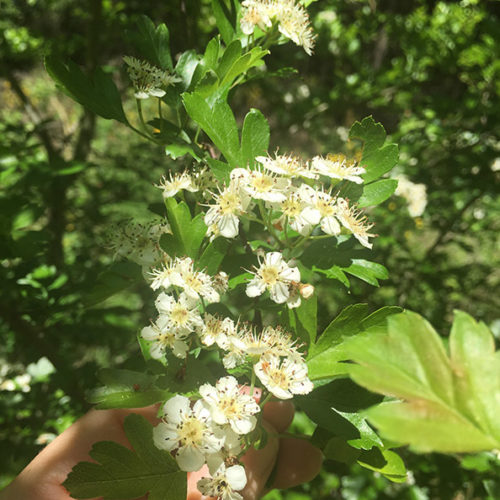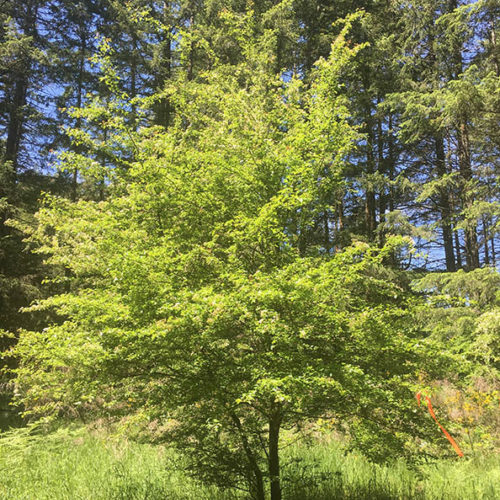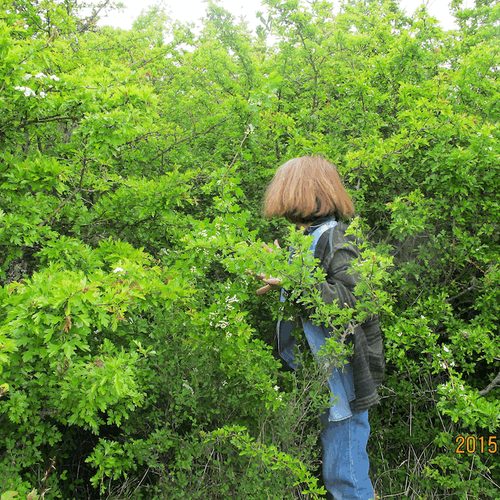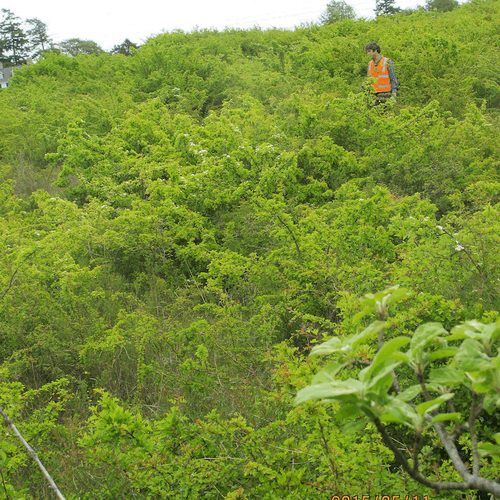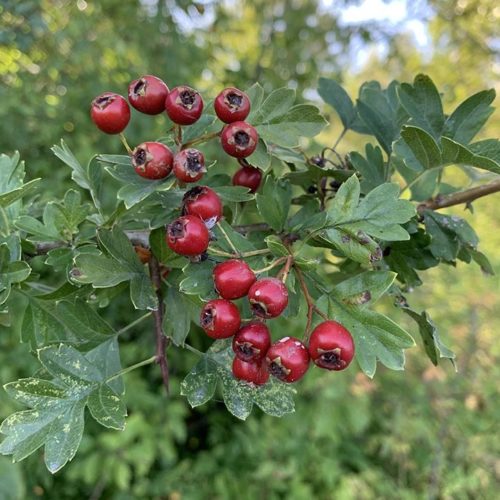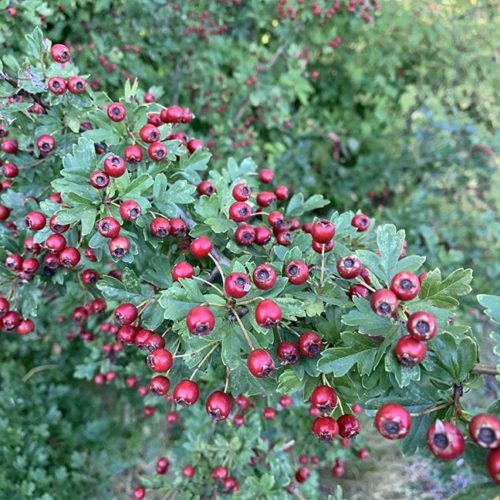English Hawthorn
Crataegus monogyna
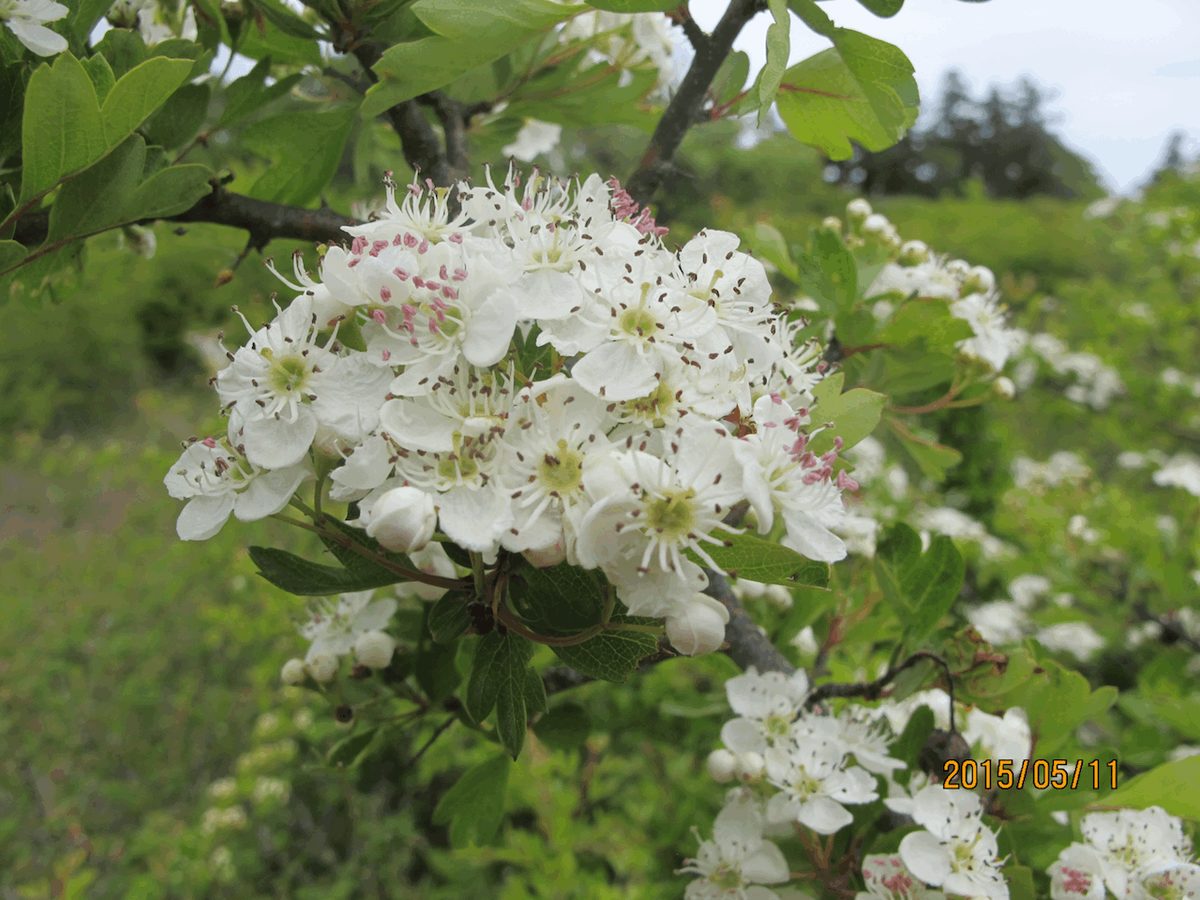
Family: Rosaceae
Other Common Names: common hawthorn, red hawthorn, one-seed hawthorn, Neapolitan medlar, whitethorn
Weed class: C
Year Listed: 2016
Native to: Asia, Europe, and Northern Africa
Is this Weed Toxic?:
not known to be
Why Is It a Noxious Weed?
Plants can form thickets and block animal movement. In fact, this plant was used historically used in hedgerows to contain livestock. Its dense growth can alter the structure of forest understories and open grasslands. Hybridization can occur between English hawthorn and the native hawthorn, Crataegus douglasii, altering the gene pool of the native species and creating competition for resources and pollinators. In Europe and New Zealand, Crataegus monogyna is a host of fire blight bacterium (Erwinia amylovora) which also affects pears and apples.
How would I identify it?
General Description
English hawnthorn is a long-lived, deciduous, small tree to large shrub. Its branches have sharp thorns and the leaves are deeply lobed. White flowers, which can have a pink tint, bloom in May and develop red fruits in the fall.
Flower Description
Flowers are clustered in groups of 10-20 on short stalks. Each has five septals and five white petals that age to a pinkish color. Five to twenty-five stamens with pink-purple anthers extend past the petals.
Leaf description
Leaves are deciduous, alternately arranged and closely clustered on short shoots. Leaves are variable in shape and are mostly ovate (egg-shaped) to triangular in outline with 3 to 7 deep, sharp, lobes. The leaves are wide, leathery in texture, and can be glabrous (smooth and hairless) or hairy. Leaf edges are toothed, mainly near lobe tips.
Stem description
Stems usually branch from a single trunk. Twigs can be hairless and smooth or hairy and are often tipped with thorns.
Fruit Seed Description
English hawthorn produces bright to deep red, drupe-like pome fruits that are elliptic to spherical in shape with one to two nutlets with one seed each found in each fruit.
May Be Confused With
The native black hawthorn (Douglas’s hawthorn), Crataegus douglasii, is in the same genus but has characteristics to distinguish it from English hawthorn, Crataegus monogyna. Crataegus douglasii, which occurs all over Washington, has weakly lobed leaves (not prominently lobed), flowers with 5 styles (not 1 style), and blackish fruits (not bright red). See photos of Crataegus douglasii here at the UW Herbarium's image database.
Where does it grow?
English Hawthorn grows in lowland areas on many soil types, growing best in moist soil or in areas with high precipitation, though established trees can survive moderate drought conditions. Please click here to see a county level distribution map of English hawthorn in Washington.
How Does it Reproduce?
English hawthorn reproduces by seed. Fruit drops to the soil beneath the tree and is also dispersed by animals, primarily by the American robin.
How Do I Control It?
General Information
Due to English hawthorn’s thorns, make sure to wear gloves and other protective clothing when working with plants. Make sure to monitor for seedlings as birds can disperse seeds far from plants. Frequently monitor habitats where English hawthorn may grow to find and control plants when they are small.
Manual/Mechanical Control
Manual removal of seedlings and small plants is possible and is easier to accomplish when the soil is moist. Seedlings can be hand-pulled, but small plants will need to be dug out including all the roots or at least the crown and upper portions of the roots to prevent resprouts. Plants can be cut back with the best time being in early summer as the plant is putting most of its energy into aboveground growth. Larger shrubs and trees can be cut to the base with chain saws or hand saws. Avoid cutting the plants when they are full of ripe fruit as they will be dispersed when moving and disposing of plant material. Remove the cut material from site as English hawthorn can regenerate from cutting. Plants will resprout unless the roots are removed or the cut surface is treated with herbicide. Burning the cut surface with a torch may also reduce sprouting.
Cultural Control
It is unknown how effective fire may be at controlling English hawthorn. A study cited in Zouhar (1998) by Pendergrass et al. (1998) reported that on the wet prairies of Oregon’s Willamette Valley, the density of nonnative, invasive shrubs which included English hawthorn, was not significantly altered by either a single fall burn or two consecutive fall burns. It was pointed out though that repeated burning over time may gradually reduce the density and slow the expansion of the invaders.
Biological Control
There are not any approved biological control agents for English hawthorn. Its spines typically deter grazing.
Herbicide Control
Currently there isn’t information on English hawthorn control in the PNW Weed Management Handbook but check back for information as it is continually being updated or contact your county noxious weed coordinator. Using a cut stem treatment on English hawthorn has shown success. Freshly cut stems, cutting as close to the ground as possible, can be painted with herbicide. Foliar sprays have not been as reliable for control and there is more risk of damage to non-target plant. Always read and follow the herbicide label instructions.
For More Information
See our Written Findings for more information about English hawthorn (Crataegus monogyna).
King County Noxious Weed Control Board information on English hawthorn.
Excerpt from the book Weed Control in Natural Areas in the Western United States



